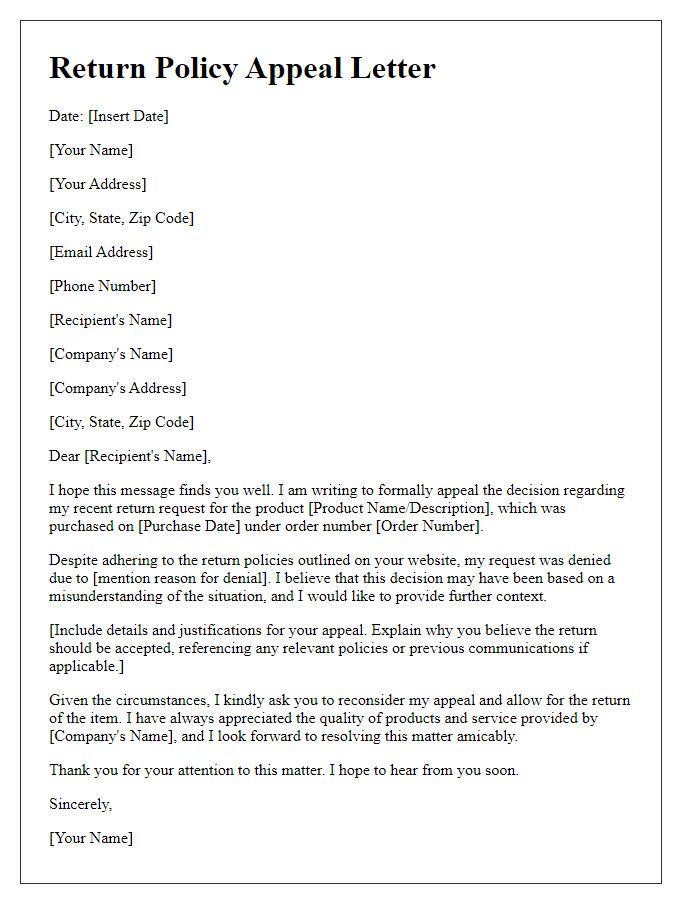Are you frustrated with a return policy that seems more complicated than it should be? Many people find themselves facing challenges when trying to return items, whether due to unclear terms or unexpected fees. In this article, we'll break down common complaints regarding return policies and offer some helpful insights for navigating these tricky situations. Stick around to learn how to craft your own complaint letter that gets results!

Clear description of the product issue.
A defective smartphone screen can lead to significant usability issues for users, particularly with devices from brands like Apple and Samsung. Common problems include screen flickering, unresponsive touch functionality, or visible cracks. In some cases, warranty coverage applies, typically lasting one year from the purchase date. Return procedures often vary by retailer, with major companies such as Best Buy or Amazon requiring the original receipt and product packaging. Customers may face restocking fees ranging from 10% to 20% of the purchase price, depending on the retailer's policy. It's essential to initiate the return process within 30 days of the receipt date to ensure eligibility for a refund or exchange.
Return policy terms and conditions reference.
The return policy for most retail companies, including online stores, outlines critical terms and conditions governing product returns and exchanges. Typically, a timeframe of 30 to 90 days is provided for customers in places like the United States and Europe to initiate a return process from the date of purchase. Items must be in original condition, with tags attached, and unopened packaging, especially for electronics, to qualify for a full refund. Returns may be subject to restocking fees, which can vary from 10% to 20% of the purchase price, impacting overall customer satisfaction. Clear instructions detailing the necessary steps for returning items, including obtaining a return authorization number, and shipping logistics, are essential elements in these policies. Many companies offer free return shipping within certain countries, while others may charge customers for return labels, which can lead to confusion and frustration among buyers.
Purchase date and order number inclusion.
A return policy complaint regarding a recent purchase can include essential details such as the purchase date, which specifies the exact day the transaction was completed, and the order number, a unique identifier assigned to each order, facilitating efficient tracking and processing of the complaint. It's important to mention the item in question, including its brand and model, as well as any relevant discrepancies, like product condition or warranty claims. Additionally, including the company's name and customer service contact details may further expedite the resolution process. Clear articulation of desired outcomes, whether a refund or exchange, would strengthen the complaint's effectiveness.
Contact information for follow-up.
The return policy of online retailers can often lead to consumer frustration, especially when purchase items fail to meet expectations. Return timelines (commonly 30 days) may not align with customer needs, causing delays in replacements or refunds. In 2022, data reported by consumer advocacy groups noted that approximately 20% of returns resulted in issues due to poor communication surrounding these policies. Specific companies, like Amazon and Target, employ various return methods, such as drop-off points or prepaid labels, but inconsistencies still arise. Ensuring contact information for follow-up is crucial for customers navigating return processes, as timely communication can enhance customer satisfaction and expedite resolutions.
Request for specific resolution or action.
Customers often find themselves navigating the complex landscape of return policies, particularly with major retailers like Amazon or Walmart. When a product falls short of expectations--due to defects or misrepresentation--it is crucial to initiate a formal complaint. The Federal Trade Commission (FTC) outlines that consumers have the right to seek satisfactory resolutions, including refunds or exchanges. Customers typically are advised to provide essential details: order number, description of the item, and specific grievances. It is also beneficial to reference any relevant documentation, such as receipts, product images, or previous correspondence. Clear and direct communication can expediate the process, ensuring that the customer's rights are upheld in accordance with the outlined return policy.













Comments